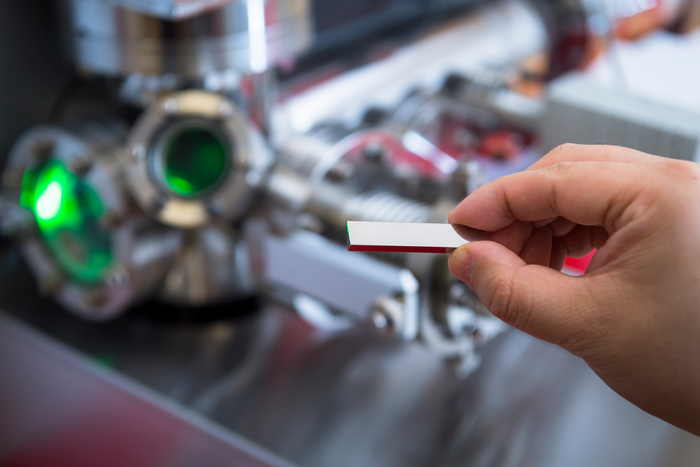Metals typically soften as they expand when exposed to heat, but a research team directed by a City University of Hong Kong (CityU) scholar and other scientists have discovered a one-of-a-kind super-elastic alloy that can preserve its stiffness even upon being heated to 1,000 K (726.85 °C) or above, with almost zero energy dissipation.
 The stiffness of the high-entropy Elinvar alloy remains invariant with temperature. (IMAGE CREDIT: City University of Hong Kong).
The stiffness of the high-entropy Elinvar alloy remains invariant with temperature. (IMAGE CREDIT: City University of Hong Kong).
The team trusts that the alloy can be used in engineering high-precision devices for space missions.
The team of researchers was guided by Professor Yang Yong from CityU's Department of Mechanical Engineering (MNE) along with his collaborators. The findings were reported in the esteemed science journal Nature.
Challenging Thermal Expansion Principles
Typically, the elastic modulus, i.e., stiffness, of a majority of solids, including metals, reduces when the temperature increases due to thermal expansion. However, Professor Yang and his team discovered that a high-entropy alloy termed Co25Ni25(HfTiZr)50, or "the high-entropy Elinvar alloy", displays the Elinvar effect. This means the alloy resolutely maintains its elastic modulus over an extremely wide range of temperature variations.
When this alloy is heated to 1,000 K, i.e., 726.85°C, or even above, it is as stiff as, or even slightly stiffer than, it is at room temperature, and it expands without any notable phase transition. This changes our textbook knowledge as metals usually soften when they expand under heating.
Yang Yong, Professor, Department of Mechanical Engineering, CityU
Professor Yang clarified that this was an inadvertent discovery.
"We discovered this phenomenon in 2017 and spent several years trying to understand the underlying mechanisms to determine why the alloy's stiffness does not change with increased temperature," he added.
The experiment confirmed that the alloy’s microstructure and mechanical properties were impervious to annealing at 1,273 K (1,000°C) for various time durations.
This means the stiffness of the alloy remains invariant to temperature. According to the literature, no known metals have been found to behave this way before our findings.
Yang Yong, Professor, Department of Mechanical Engineering, CityU
Special Structure Leads to Unique Properties
Recently, Professor Yang and his team found the reason behind the discovery: a unique highly distorted lattice structure with an intricate atomic-scale chemical composition. Owing to the blend of the exclusive structural features, the high-entropy Elinvar alloy possesses an extremely high energy barrier against dislocation movements.
Consequently, it exhibits a remarkable elastic strain limit and an approximately 100% energy storage capacity.
The researchers also found that the high-entropy Elinvar alloy has an elastic limit—the maximum strain that can be produced within it without causing long-lasting deformation—of approximately 2% in bulk forms at room temperature, in sharp contrast to traditional crystalline alloys that possess an elastic limit of below 1%.
Although an alloy with a similar composition was described several years ago, its behavior and structure were not clear at the time. In this research, the team created three atomic structural models for the same alloy with various distributions of the element atoms and compared the properties. They patented the discovery based on this methodical investigation of the alloy system.
Potential for Making High-Precision Devices
Remarkably, the team discovered that the alloy is "very springy" and can capture a large amount of elastic energy. Professor Yang highlighted that the alloy could be exploited for energy storage for later energy conversion.
Since elasticity does not dissipate energy and therefore will not generate heat, which can cause devices to malfunction, this super-elastic alloy will be useful in high-precision devices, such as watches and chronometers.
Yang Yong, Professor, Department of Mechanical Engineering, CityU
The research team predicts numerous applications for the alloy, predominantly in aerospace engineering, wherein devices and machinery are expected to endure severe temperature changes.
We know that the temperature ranges from 122°C to -232°C on the surface of the moon, for example. This alloy will remain strong and intact in an extreme environment, and so it would fit very well with future mechanical chronometers operating within a wide range of temperatures during space missions.
Yang Yong, Professor, Department of Mechanical Engineering, CityU
The corresponding authors of the article are Professor Yang, Professor David Joseph Srolovitz (a former CityU scholar, currently at the University of Hong Kong), and Professor Pao Chun-Wei from Academia Sinica.
The first author is Dr He Quanfeng from CityU's MNE (one of Professor Yang's former PhD students) and the contributing authors are Dr Wang Jianguo from MNE (one of Professor Yang's former post-docs) and Dr Chen Hsin-An from Academia Sinica (one of Professor Pao's former PhD students).
Others contributing to the study were Professor Liu Chain Tsuan, CityU's University Distinguished Professor from the College of Engineering and Senior Fellow of the Hong Kong Institute for Advanced Study, Professor Ren Yang from CityU's Department of Physics, and Dr Luan Junhua, Dr Ding Zhaoyi, Mr Zhou Ziqing and Dr Jichao Qiao, all from CityU.
Other collaborators were Professor Zeng Qiaoshi from China's Center for High-Pressure Science and Technology Advanced Research and Professor Jean-Marc Pelletier from the University of Lyon.
The research received support from CityU, the Research Grant Council Hong Kong, the Guangdong Major Project of Basic and Applied Basic Research, China, and the Academia Sinica Career Development Award.
Journal Reference:
He, Q. F., et al. (2022) A Highly Distorted Ultraelastic Chemically Complex Elinvar Alloy. Nature. doi.org/10.1038/s41586-021-04309-1.